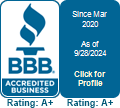
Thrifty Habits To Get Your Finances In Order
Although there has been some progress in inflation, it still affects many Americans. Therefore, it is essential to manage your finances to make your money go further and save more of it. Increased frugality is one strategy for achieving this.
However, being thrifty does not imply giving up on your passions to save money or adopting a less expensive or inferior way of life. The beauty of frugality is changing your spending patterns to impact your financial situation.
Try putting these seven essential thrifty habits into practice to start saving and move towards a significantly stronger financial situation now and in the future.
1. Buying In Bulk
Bulk purchases are a great way to spend your money wisely. Consider the non-perishable household goods you frequently purchase, such as soap, shampoo, rice, and toilet paper, and buy them in bulk. Even the perishable foods you consume regularly can be purchased in large quantities to be cooked and frozen for later use.
Large portions usually come at a lower cost per unit. Additionally, having a sufficient stockpile will help you get through difficult financial times when you may have less room in your budget. However, remember to do the math before buying in bulk. It is not always best to purchase that big box. Ensure you have enough storage space and only buy what you need to avoid wasting money.
2. Reduce Your Grocery Budget
Even though food has become very expensive, there are many ways to shop wisely. Here are some tips:
- Compare prices at various stores in your neighborhood using your rudimentary shopping list. Make a note of the costs and take into account things like store loyalty programs, points, petrol rewards, and discounts to find the grocery stores that are the cheapest.
- Avoid paying delivery fees, prepare meals with inexpensive ingredients like quinoa and rice, and organize your menu before shopping.
- Start your garden. You can enjoy fresh produce and save money by growing fruits, vegetables, and herbs you use most frequently.
- Do a pantry clean-out before your next shopping trip. As an analogy, think of throwing away food as you would real dollars.
3. Lower Your Monthly Bills
You may spend hundreds or even thousands of dollars on bills each month, but there are simple ways to cut costs:
- Turn off any inactive appliances. When you finish using the kettle, microwave, phone charger, and computer monitor, turn them off. Your annual standby power expenses could reach $100.
- Consider installing a smart thermostat that can efficiently control interior temperatures and reduce energy costs. Additionally, lower the thermostat by 7 to 10 degrees Fahrenheit from the customary setting for eight hours daily. According to the U.S. Department of Energy, this will save you 10% yearly on cooling and heating.
- To reduce your electric bill, use dimmer switches, turn off lights when you leave a room, and run appliances like your dishwasher, washer, and dryer later at night or early in the morning.
- Find the best phone or internet connection that fits your budget-conscious way of life. Select the least expensive family plans to maximize your benefits.
- Compare prices from different insurance companies for your auto, home, or renter’s insurance, and find out if they offer discounts for safe drivers or clients who bundle their policies.
- Review your subscriptions and cancel any you do not use frequently or don’t need. This covers streaming services, gym dues, and other monthly fees that can add up quickly.
4. Count on Sales, Discounts, and Coupons.
Look for discounts or coupons at your neighborhood stores. Sign up wherever you can because a lot of retailers offer member discounts. You can use coupons to save a few dollars on each purchase, which adds up quickly. Download some legitimate coupon apps if you don’t feel comfortable using coupons.
Additionally, keep track of market or online store sales, credit card points and rewards, and brand promotional codes. You can save money on each trip to the grocery or clothing store.
5. Meal Prepping
Meal prepping is a wise way to save time and money because, besides housing and transportation, food is one of your top three expenses.
You will only purchase what you need because you have to decide what to eat in advance. You will not just browse the aisles and buy whatever whets your appetite. Additionally, if you have something ready in the refrigerator, you might be less tempted to use the drive-thru for an urgent lunch or dinner.
To do this requires some discipline, but over time, you will benefit from the cost savings.
6. Look For Free Activities
Although going to the movies or a restaurant can be enjoyable, they can be expensive. Instead, look up free activities in your area to participate in. It might entail going to the park, visiting museums on a day when admission is free, strolling through botanical gardens, and exploring nearby hikes and beaches.
7. Lower Your Restaurant Expenses
Most frugal experts advise you to forgo dining out altogether to save money. But rather than doing this, you can look for some excellent discounts and deals that can help cut your expenses by up to 40% or more. Many restaurants offer free dinners, meals, or a side dish on events like birthdays and anniversaries.
You can also look for a place with happy hour specials if you know you and your coworkers will be going out for drinks. Further, you can find a place that has a BOGO offer and go with a friend to get an afternoon coffee.
There are many options for getting food and drinks for a low price or at a discount.
Bottom Line
There are countless ways to cut costs. Finding strategies that work for you and sticking with them is the key. By implementing some or all of these tips, you save money. Although changing habits can be difficult, you will be glad you took steps to organize your finances.


